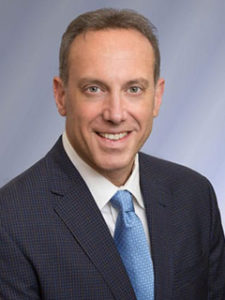
Daily pay rates in November under the Patient Driven Payment Model were an estimated 5.27% above federal regulators’ forecast, according to a report released Wednesday by the Zimmet Healthcare Services Group.
But in many cases, overall (prorated) provider revenue was below base-year projections due to “atrophy” of the Medicare fee-for-service population, Zimmet Healthcare CEO Marc Zimmet explained.

Data was culled from 859 skilled nursing facilities involved in Zimmet’s CORE Analytics program.
“Provider per diem rates are up under PDPM more than expected, but it’s all heavily impacted by local market conditions,” Zimmet said. As one example, he noted that providers in the Pittsburgh area (where alternative payment models are more prevalent) would be vastly different from providers in close by West Virginia (where they are not).
“PDPM is one part of a rapidly changing environment that is unevenly distributed across the U.S.,” Zimmet told McKnight’s. “We need a consistent measure to quantify that. We’re going to be inundated with analyses the next few months on PDPM performance but we need a standard measure of performance to tell whether we’re doing well or not.”
PDPM is structurally sound but may be highly sensitive to poorly targeted funding adjustments, report authors noted. “It needs refinement in certain areas that are vulnerable to mispricing.”
“We find most providers acclimating reasonably well — some much better than others — while a small but significant few are struggling due to lack of preparation and/or resources,” the authors added. “The system appears to be working generally as advertised. We expect PDPM per diem rates to increase modestly to appropriate levels, primarily as resource-needs associated with services/conditions that existed but were not captured pre-PDPM become properly represented on patient assessments.”
Component refinement likely would correct potential rate distortions, increase equitable allocation and encourage further coding accuracy, report authors added.
Adjusting a component is a far more meaningful way to support the integrity of the reimbursement system, said Steven Littlehale, chief innovation officer for Zimmet Healthcare Services Group. He also cautioned against extrapolating to total Medicare revenue, noting that could give the false impression that providers are profiting heavily off of the new system and thus need to have their wings clipped.
“As important to analyzing PDPM trends, is examining how care process and outcome measures change as a result of PDPM,” Littlehale said. “We have the potential to dramatically improving care under this new system, but have we landed on how we’re going to measure these key aspects of care?”
CMS predicted the reverse
The report found that CMS’s projections of how many skilled nursing facilities would gain or lose dollars per patient day were opposite of what really happened with SNFs in Zimmet’s database. In reality, only one-third lost on dollars reimbursed per patient day, while two-thirds gained. CMS had predicted in its own 2017 PDPM benchmark projections that 68% would lose and 31% would gain.
Zimmet was clear that his company’s November figures analysis could not be extrapolated to gauge national performance since the sample was non-random.
He said that the PT/OT component is “most in need of adjustment.” He called “PDPM’s greatest flaw” its act of paying similar rates irrespective of patient-specific condition, which “strangely perpetuates a practice the system was intended to eliminate.”
In addition, the speech language pathology (SLP) component’s rates are expected to “disproportionately increase.”
Zimmet said all eyes should be on CMS, which holds many answers since it will decide what gets reviewed and recalibrated. He stressed that regulators should not view any apparent higher per diem payments as a sign that either that providers are “gaming” the system or that big clawbacks should be automatically employed.
He also marveled that CMS seems to be counteracting some of its own goals. With certain alternative payment models in place, lengths of stay have dropped significantly. This, however, has kicked many providers into a higher per diem pay rate.
“The irony is there is more downward pressure on lengths of stay by ACOs, bundling, whatever. And as those rates go down, the higher the per diem rate becomes.”
“Too many providers are struggling financially and can ill afford continued instability, and the differences among markets are so severe that the entire Revenue Delivery System requires remodeling,” Zimmet concludes in the report.
“The totality of the fragmented SNF revenue allocation system is worse than broken. It’s essentially arbitrary, yet national performance will dictate the fate of each and every SNF’s FFS Medicare revenue.”



